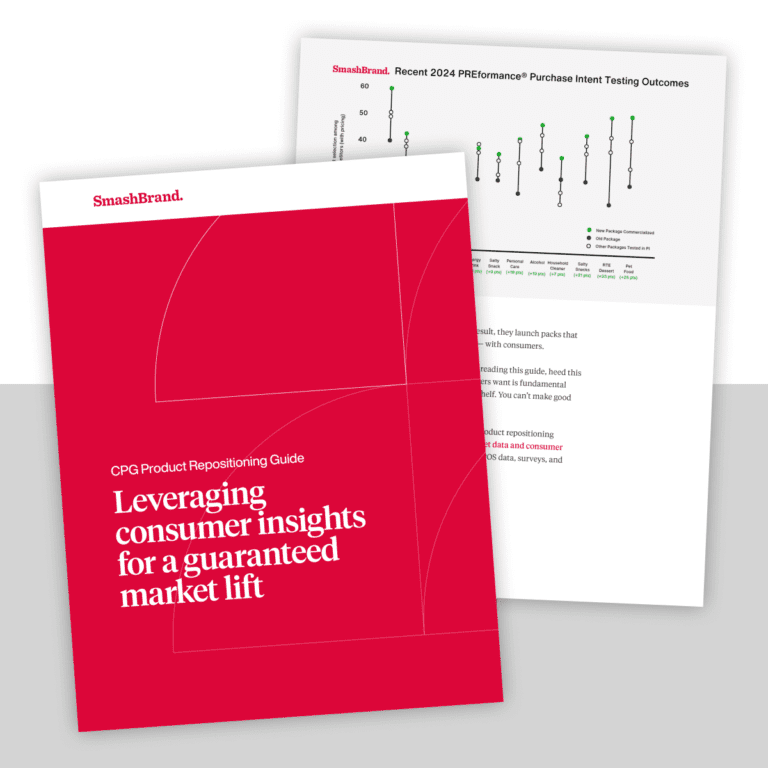I am sure we have all been in the store looking at a line of products and are confused as to which one to get. Do I want the standard, deluxe or the premium model? Is the edge frost different from the winter blast? What do I do when they all look the same? Read 6pt font on the pack to figure it out?
These are common questions that consumers have to a problem that should never exist in your package designs in the first place. If you make sure there are clear and definable differences between products you can not only can you avoid a problem you can create a benefit.
One proven method in doing this is called: color coding.
What is Color Coding?
Color coding is the act of using a difference KEY COLOR for each product in a family line.
Honey, don’t forget to get the blue one!
Even I have noticed the subtle effect of color coding on my buying habits. How many times have you gone to the store to get your wife something and her instructions were: “get the blue one”. She doesn’t remember the name, flavor or details of the product but she knows the brand and color.
This effect is known as “brain dumping” and it is when your brain boils down all the information you gather in a day and reduces it to only the most necessary parts. Hence when you go to the store and you know you like a certain type of ice cream but you cant remember what it is. Your brain says you bought the one in the blue package. If you think about it, its quite ingenious as your mind has boiled down the entire marketing strategy of a million dollar company to two things. Brand and Color.
Why would I want to use color coding?
If you have a line of 10 products and there are a few in the line that bleed into each other from a performance, function and cost perspective you are certainly going to want to clearly establish the difference from a visual perspective. Using the rainbow effect is one way to clearly do this. It also has a few very nice benefits.
Benefits of Color Coding
- Consumer has a clear choice
- Consumer will bond with a certain color and return for it
- Boils identity of product to its simplest form
- Enables a Brand Wall type effect
Don’t call an Orange and Orange . . unless its an Orange.
The most common example of color coding is in flavors. Its been well established for over a 100 years that certain colors dictate a flavor response. Take yellow for example. Its either lemon or banana. Orange is well . . Orange. You can see this in any frozen food isle.
Another common use is in beauty supplies like makeup, shampoo and deodorant.
You want to be aware of the already established color associations that exist already. Don’t try to get too cute with using the wrong color to associate a flavor to be trendy. Consumer confidence and trust is more important. Give them what they expect.
A Brand Wall of Rainbows
Another benefit from using color coding is the Rainbow block effect. And that comes from the way the product is merchandised on the shelf. Many companies try to create large blocks of a similar base color and then use a key color to help identify individual products. The larger a Brand Wall is on the shelf the higher chance it will catch the consumers eye.
Sneaky Tricks are for Kids
There are some bad things you need to know about using color coding as you design your next package design project and those are copycat tactics. It’s very common for the no name brand to mimic a brand leader with packaging and color coding that is very similar to the leaders in an attempt to confuse or convince the consumer that their product is the same.
As a Creative Director and graphic designer myself I have run into various scenarios where you are asked by a client to mimic a brand leader or in fact there is not much color space left in a crowded market segment and you are forced to do what you can.
In these times you need to rely on your creativity and know how to find a solution. There is never a need to rip off or blatantly copy another design. EVER.
I like to tell clients: “Why do you want to look like them when we can design better packaging that is unique and fits your brand?”
This and some brainstorming usually leads to more fruitful and productive discussions.
Data-Driven Brand Development
Want a best-selling brand? SmashBrand is a brand development agency for FMCG and CPG companies. From brand strategy to packaging design testing, our Path To Performance™ process guarantees a retail performance lift. Book a time to discuss your project with our team.
Subscribe to
Nice Package.
SmashBrand’s Nice Package: Stay current with our latest insights
Free Resource.

CPG product repositioning guide.
Explore the five undeniable signs your CPG product needs repositioning along with strategies for leveraging consumer insights for a guaranteed market lift.
Download Whitepaper About CPG product repositioning guide.